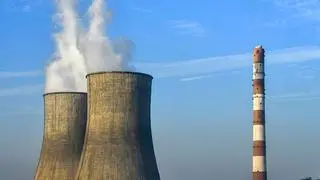Oil prices dipped on Friday on expectations that OPEC will raise output to counter shrinking exports from Iran after sanctions imposed by the United States, where crude stocks have swelled.
Prices are still on course though for the longest run of weekly gains in years, as oil markets have tightened amid an OPEC output cut deal, sanctions on Venezuela and Iran and unsteady production in Libya.
Brent crude futures were at $74.24 per barrel , down 11 cents. U.S. West Texas Intermediate (WTI) crude futures were at $64.96 per barrel, down 25 cents.
The dip followed Brent's rise above $75 per barrel for the first time this year on Thursday after Germany, Poland and Slovakia suspended imports of Russian oil via a major pipeline, citing poor quality.
The move cut parts of Europe off from a major supply route. Russia has said it planned to start supplying clean oil via a pipeline on April 29.
WTI is on track for its eighth successive weekly gain, the longest weekly run since the first half of 2015. Brent is set a fifth weekly price gain, the longest stretch in a year.
Crude futures are up around 40 percent so far this year.
Washington said on Monday it would end all exemptions for sanctions against Iran.
“The end of the U.S. waivers on Iran exports will be offset by higher core-OPEC and Russia and as a result we do not expect further price upside, even if volatility is likely to increase in coming months,” U.S. bank Goldman Sachs said.
Despite U.S. efforts to drive Iranian oil exports down to zero, many analysts expect some oil to still seep out of the country.
“400,000 to 500,000 barrels per day (bpd) of crude and condensate will continue to be exported,” said energy consultancy FGE, down from around 1 million bpd currently.
Jefferies bank saw 500,000 to 600,000 bpd, adding “at least China and potentially India and Turkey will continue to import Iranian crude”.
China, the world's biggest buyer of Iranian oil, has formally complained to the United States.
Meanwhile OPEC member Iraq said it could raise its output. Also providing a cap on prices, U.S. crude inventories last week rose to their highest since October 2017.
“All of this had the makings for a bout of rally fatigue. Indeed, the energy complex is once again struggling for traction this morning as market players await for a fresh catalyst to take prices higher,” PVM analysts said in a note.







Comments
Comments have to be in English, and in full sentences. They cannot be abusive or personal. Please abide by our community guidelines for posting your comments.
We have migrated to a new commenting platform. If you are already a registered user of TheHindu Businessline and logged in, you may continue to engage with our articles. If you do not have an account please register and login to post comments. Users can access their older comments by logging into their accounts on Vuukle.